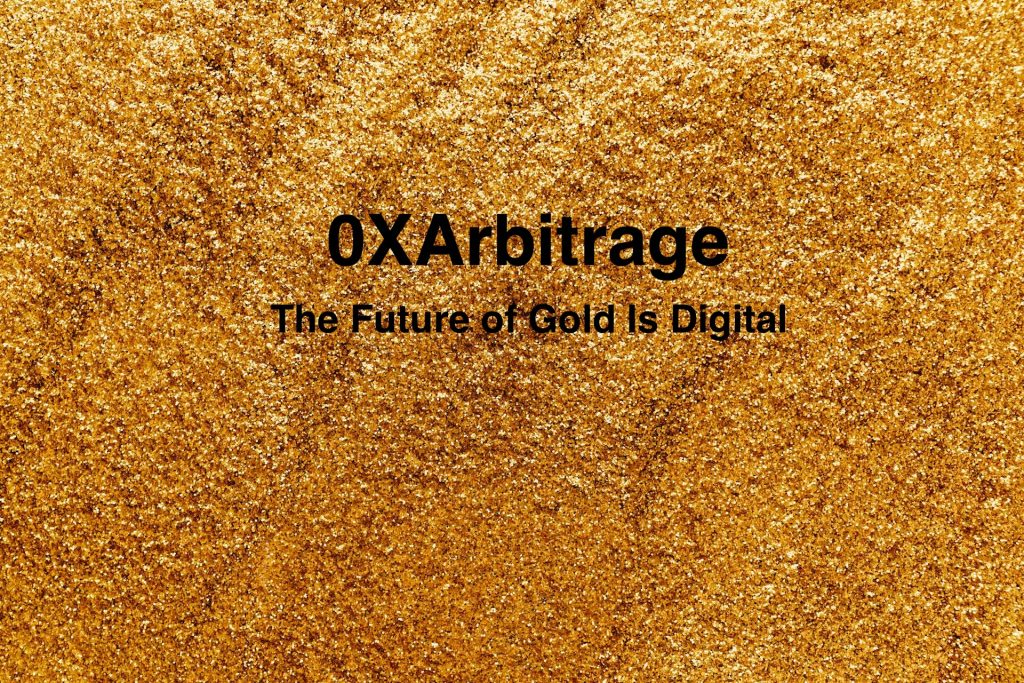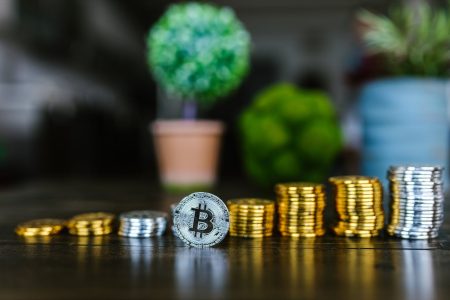For centuries, gold has been the ultimate symbol of wealth, security, and stability. But in today’s hyper-connected economy, the rules of wealth management are rapidly evolving. Physical gold, while timeless, is no longer practical. It’s bulky, hard to transport, and often insecure.
Imagine planning a trip across continents with a substantial portion of your wealth and taking physical gold along? Risky, inconvenient, and nearly impossible in today’s security-conscious world. That’s where digital gold steps in, and with it, a new ecosystem is built around accessibility, mobility, and technology. Digital gold offers a new way to achieve wealth portability in an increasingly digital and borderless world.
Table of Contents
ToggleHistory of Gold
The earliest instance of gold being discovered and mined for its value dates back to 3100 BCE, in Egypt. The ancient Egyptians found gold among the dunes and, enticed by its appearance, soon began mining it and utilizing it as a luxurious form of currency. As such, the idea of gold as a status symbol has been a part of international culture since before written languages even existed. In a time predating recorded communication, the ownership of gold was a form of communication unto itself; the wearing of golden artifacts or the ownership of golden items proved the wealth and power of an individual in a matter of moments.
Thousands of years later, around 600 BCE, gold began to be used as actual currency. However, it is critical to note that utilizing gold as currency was far less common than the use of silver as currency. This is because there was a far greater abundance of silver, and its value was less than that of gold, making the minting and pressing of currency in silver far more feasible for all.
As such, even then, the idea of gold as some greater form of wealth than could be measured by mere currency persisted. In many ways, the cultural connotations surrounding gold have remained the same ever since. However, the world itself has changed immeasurably since then. It is no longer feasible to lug around large gold bars or individual gold trinkets to showcase one’s wealth. Instead, as the financial market pivots to embrace new technological advancements and online systems, gold is moving with it, in a fittingly innovative fashion.
Understanding Digital Gold
Digitalized gold can take on many forms, from tokenized gold to gold-backed cryptocurrencies to ETFs backed by physical gold. These are all digital forms of currency representing physical gold within the online space. This is done through the use of blockchain technology, which provides security and transparency for gold owners and purchasers alike.
In the same way that a non-fungible token (NFT) is not actually a physical token, but rather a digitized embodiment of that ownership, digital gold is indicative of real-world value. While the thought of a digital number or token taking the place of a physical piece of gold would have once seemed outlandish, key platforms are now offering digital gold options, fortifying and authenticating its potential.
Gold in the Age of Digital Currency
In 2008, Satoshi Nakamoto founded Bitcoin, the first-ever cryptocurrency. At the time, Nakamoto was directly responding to public anxieties surrounding traditional industries and, more specifically, banking institutions. In the aftermath of the U.S. recession, many people had their faith in traditional banking systems shaken, as the truth of the whole endeavor was put on full display. As people performed bank runs during the recession, attempting to withdraw their funds from the banks as fast as possible, several banks ultimately went under, costing their clients everything. While many people think of banks as having individualized vaults for each person, in which their money is stored, nothing could be further from the truth.
The reality is that a bank does little more than keep a record of how much money each individual has put into the bank, and is prepared to pay that amount back to the individual should they need it. However, this does not mean that a bank has enough money on hand to pay back every individual at once. As a result, in times of financial strain, when everyone seeks to withdraw their money from the bank simultaneously, it can lead to disaster.
A Financial Revolution
It was in the wake of such stressors that Nakamoto founded Bitcoin. This peer-to-peer digital currency sought to circumvent what they saw as flawed traditional systems in favor of putting financial power directly in the hands of the people. When it was launched in 2008, Bitcoin made almost no impact on the market, with many failing even to understand what digital currency could offer. However, twelve years later, in 2020, as the global market went through a similarly tumultuous period with COVID-19 and its ensuing lockdowns, Bitcoin and other cryptocurrencies achieved enormous popularity.
In the years since then, cryptocurrency has become an outright pillar of modern finance. To this end, many new forms of cryptocurrency and other technological breakthroughs, such as the widespread implementation of artificial intelligence (AI), have emerged in its wake. For many, the digital marketplace has become a far more critical sector than the physical, traditional one. As such, high-value physical items, such as gold, are now transitioning to digitized currency and reaping the benefits from it.
Why Wealth Portability Matters
One of the chief contributing factors to the popularity of digital currency has been its wealth portability. Life is made simpler when the total value of one’s wealth is accessible on their digital mobile device, eliminating the need to carry large amounts of cash or multiple physical cards. This element of digital currency has been an especially potent contributor to the increasing popularity of digital gold.
Wealth portability refers to the ability to move one’s wealth quickly and efficiently, whether physically or digitally. For instance, it is much easier to travel with digital gold than with physical gold. Carrying physical gold on your person invites various stressors and potential conflicts, including anxiety over its loss and the physical strain of handling the often weighty pieces. Digitally speaking, the value of gold is far easier and more efficient to transfer across different accounts or holdings than wealth is within the confines of traditional banking systems.
Real Estate
There are numerous challenges surrounding traditional forms of wealth, such as real estate, cash, and even physical gold. These physical objects are susceptible to damage or even decay under the wrong circumstances, which can lead to their value depleting rapidly. Think of John Huston’s iconic film, The Treasure of the Sierra Madre, in which the team of lead characters discovers a repository of gold in a remote location. At first, they believe themselves to be in the clear, rich from their discovery. However, they soon realize that just because they have this physical gold, it isn’t actually worth anything until they can make their way back to civilization, a task which turns out to be far more difficult than they realized. If these characters had digital gold, their journey would have been made that much easier, as it is instantly safe and stored.
This highlights the increasing need for portable assets in times of economic uncertainty, migration, or political instability. Digital gold’s value doesn’t decay or depreciate in the way that physical currency does, making it an ideal investment for those uncertain of what the future may hold, whether that be due to political unrest or potential retirement plans.
Digital Gold with 0XArbitrage
One of the most innovative players in this space is 0XArbitrage. This platform not only digitizes gold ownership but also opens up new financial opportunities through blockchain, automation, and decentralized finance. Gold has value, but it’s often difficult to sell quickly. 0XArbitrage changes this by offering loans secured by PAXG (Paxos Gold), allowing users to retain their gold ownership while accessing liquidity in USD.
Want capital without selling your assets? Just deposit your PAXG as collateral to borrow dollars instantly at a low interest rate. It’s quick, transparent, and operated entirely through smart contracts: no middlemen or lengthy approval processes. Your gold remains secure, and you gain the cash flow you need.
This goes beyond simple lending; it redefines gold-backed credit for the digital age. 0XArbitrage also offers a fully integrated crypto trading platform, allowing users to diversify their portfolios within a single ecosystem. Whether buying, selling, or holding, all trades are executed with precision and transparency. Even more exciting, future contracts are in development, giving traders the ability to hedge, speculate, and strategize like professionals. It’s not just about gold; it’s about equipping you with all the tools to manage your digital wealth.
Under the hood, 0XArbitrage uses artificial intelligence to streamline operations like pricing and execution. The platform automates arbitrage strategies across digital gold markets with AI, helping users maximize value and minimize risk.
How Digital Gold Enables Wealth Portability
With digital gold, users have access and ownership from anywhere in the world. It doesn’t matter if you’re shopping at a market down the street from your home or if you’re in an entirely different corner of the globe; your digital gold is readily available for use, ensuring you are prepared for every situation.
Comparing Digital Gold to Other Portable Assets
While cryptocurrencies such as Bitcoin and Ethereum do offer similar ease-of-use to digital gold, the latter offers a greater degree of stability and backing. The value of cryptocurrency has remained notoriously volatile, even as its popularity has continued to rise. Compare this to digital gold, which is inflation-resistant and has generations of trust built into it.
Digital gold is a relatively new form of digitized currency compared to well-established cryptocurrencies, leaving ample room for gold’s applications and potential to flourish within the online sector. Whereas cryptocurrency is an institution unto itself at this point and set in its ways, digital gold leaves more room for fluidity.
The Future Outlook
Physical gold had its era, but in a world that demands portability, liquidity, and speed, digital gold is taking center stage. Whether you’re looking to borrow against your gold, trade crypto with advanced tools, or simply store your wealth more intelligently, this platform is a powerful step forward.
The gold standard isn’t dead; it has just been upgraded.












